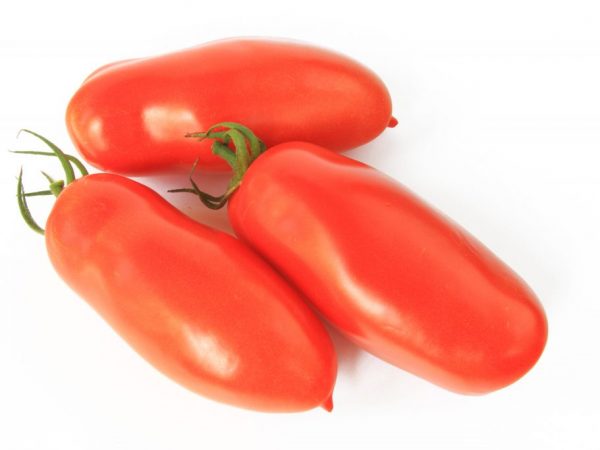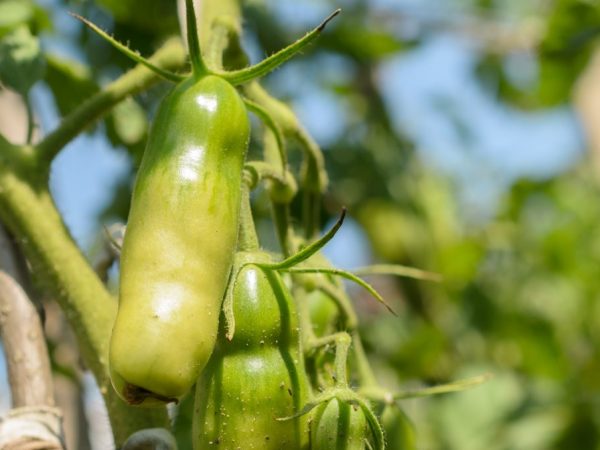Description of Casanova tomato
The Casanova tomato ripens quite quickly. Its main feature is its unusual shape, like a tomato. If you want to decorate your garden with unusual vegetables, then turn your attention to this variety. A fairly large number of gardeners have already appreciated the excellent taste and market characteristics of this variety.

Description of Casanova tomato
Variety characteristic
Casanova was bred in the northern part of Russia by the most famous breeders. When creating, those parameters of fruits and plants were achieved, which, at that time, had no analogues in agriculture. After the end of all research, this Siberian species was included in the State Register of the Russian Federation.
Many reviews say that the best yield is achieved at the moment when the cultivation takes place in a greenhouse or greenhouse. But, farmers and agronomists living in warm climatic conditions note the good characteristics of the crop when planted in the open field.
Description of the plant
The description suggests that the bush of this variety has a great height. In some cases, the height of the bush can reach 2 m. For this reason, it is very important to tie the stem and use the subcrust. Foliage is described as moderate in content.
The leaves have a rich shade of green. There is a slight roughness and tuberosity on the surface of each sheet. Experts point to the presence of a developed root system.
Description of the fetus
Tomatoes of this variety are characterized by a rather non-standard shape. The description suggests that they are presented in an oblong shape and have a double bottom. The rind is quite dense and glossy. The surface is smooth, without perceptible roughness. The weight of an individual ripe fruit reaches 200 g, but the length of a tomato is about 15-20 cm.
The palate is rich and has a sweet, pleasant taste. The pulp is juicy, but not watery. There is also a characteristic that this variety is universal in application. Tomatoes are suitable for both salads and fresh consumption. It is believed that these tomatoes are suitable for canning in the winter season. The only feature is that they cannot be preserved as a whole.
Benefits
When considering the description of the variety, it is possible to highlight the positive aspects that make:
- high indicators of taste and commercial quality;
- the possibility of transportation over long distances and high storage times.
Reviews of gardeners indicate that it is a disadvantage that this plant is very fond of warmth and has a negative attitude to sudden changes in temperature. Also of note is the low resistance to diseases and parasites.
Landing rules

Proper care will ensure you have a good harvest
First of all, you should take care of the seedlings. To do this, a few months before the intended planting, seeds should be planted.It will be ideal if you treat the seeds with disinfectants and growth stimulants. Planting seeds should be carried out in soil moistened with water. Seeds should be planted in containers and placed in a warm, lighted room.
As soon as several pairs of leaves are formed on the seedlings, you can plant in open ground. To do this, it is recommended to add about 1 liter of water and a small amount of organic matter in the form of humus or peat to each hole. The ideal temperature for planting is 20 ° C. It is also necessary to adhere to the planting scheme, which is 40x50 cm.
Care features
Due to the fact that in most regions planting is carried out in greenhouses, certain care rules must be followed.
- The temperature in the greenhouse should be regulated. During seed growing, it should be about 20 ° C, and during the appearance of the first shoots, it can be reduced to 15-18 ° C. Do not forget that drafts are dangerous for this species, so you should not open windows or doors.
- Watering should be done with warm water. It should not be plentiful, but carried out as the soil is drained. It is important to control the watering process so that moisture does not get on the foliage.
- Loosening of the soil and removal of weeds should be carried out a few days after the installation of irrigation. This will allow the root system to be saturated with moisture, nutrients and air.
- Due to the high height of the main bush, the plant should be supported and a garter should be carried out.
- Top dressing is carried out both with the use of organic matter and with the use of minerals. As organic compounds, bird droppings, humus or eggshells are used. But minerals should consist of phosphorus or potassium. Flowering will improve after spraying the plant with boric acid.
Fighting insects and diseases
Due to the fact that Casanova tomatoes have insufficient resistance to diseases and parasites, it is recommended to carry out preventive measures to protect the plant. Prevention should be carried out throughout the growing season. In the fight against late blight, the bushes should be sprayed with a garlic solution, or with a drug such as Barrier.
In the fight against rot, calcium will come to the rescue, so it is recommended to use chalk or limestone and apply them at the base of the stem. For spotting, use Oxyhom. Against wilting, it is advisable to use a chemical called Barrier. You can get rid of whiteflies or slugs with the help of medicinal preparations or Confidor. A vinegar solution or the preparation Thunder helps from a wireworm or a bear.
Conclusion
Due to the fact that this variety has a large number of positive characteristics, gardeners also pay attention to this species. They are not stopped by the fact that he is exposed to certain diseases and it is important to carry out regular preventive measures. Casanova amazes with its excellent yield indicators, which cannot but attract public attention.


